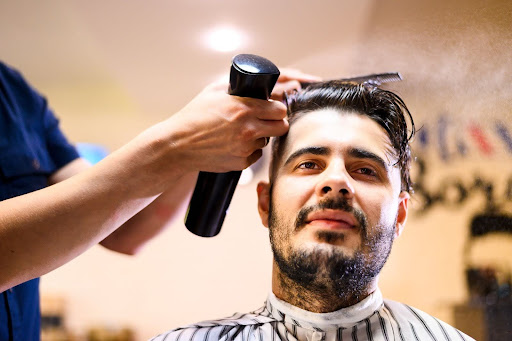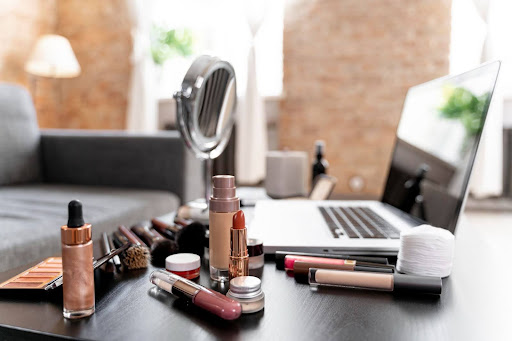Exhibiting at a trade fair near you is a great method of exhibiting products, networking with potential customers, and building brand awareness. But since there are other exhibitors vying for attention, you need a solid marketing plan. Here are the top 15 trade show marketing strategies for success.
1. Set Clear Goals
Prior to attending a trade show, the objectives must be defined. Whether it is creating leads, brand awareness, product launches, or meeting industry leaders, having well-defined goals guarantees concentrated efforts and quantifiable outcomes. The goals must be realistic and also incorporate the long-term goal of the brand.
2. Select the Right Trade Fair
Choosing a trade fair near you that aligns with the brand’s industry and target audience is essential. Events that attract high-quality visitors and industry professionals provide better opportunities for engagement and business growth. Researching the exhibitor list, previous attendee demographics, and event reputation can help in making the right selection.
3. Design an Attractive Booth
An attractive booth assists in grabbing attention in a crowded trade show setting. Innovative designs, LED screens, interactive displays, and brand-matched color schemes can make the booth more attractive and attract visitors. Proper lighting and ample space, combined with visible signage, facilitate effortless navigation for visitors.
4. Promote Before the Event
Pre-event marketing through social media, email campaigns, and industry publications creates excitement and attracts visitors to the booth. Announcing exclusive offers, product launches, or live demonstrations can encourage attendees to plan their visit. Collaborating with influencers or event partners can further enhance outreach.
5. Leverage Social Media Marketing
Connecting with participants via live event coverage, hashtag campaigns, and interactive posts can enhance visibility. Instagram and LinkedIn are good platforms for posting event highlights, behind-the-scenes, and product showcases. An event countdown or a giveaway can enhance audience engagement.
6. Offer Live Demonstrations
Live demonstrations provide an interactive experience for attendees, allowing them to see products in action. Whether it is a makeup tutorial, hair styling session, or skincare routine, live demos create engagement and trust. Demonstrations should be scheduled at peak hours to maximize audience participation.
7. Engage Visitors with Interactive Elements
Interactive features such as virtual reality (VR), augmented reality (AR), touch screens, or gamification beautify the trade show experience. They aid in grabbing visitors attention and engaging them with the brand more. Having entertaining contests or quizzes can motivate visitors to linger longer at the booth.
8. Provide Exclusive Trade Show Offers
Offering special deals, discounts, or free product samples at the trade show increases visitor interest. Exclusive trade show-only offers create a sense of urgency and encourage potential customers to make a purchase. Providing limited-time promotions can further drive sales and brand recall.
9. Collect and Organize Leads Efficiently
Capturing visitor information through digital forms, QR codes, or business cards ensures effective follow-up. Using lead capture apps can streamline the process and improve post-event engagement. Sorting leads based on priority levels can help focus on high-value prospects first.
10. Train the Booth Staff
Having a well-trained team is crucial to achieving success at a trade show. Employees should be product savvy, effective at interacting with guests, and proficient in lead conversion strategies. Rehearsing standard questions and answers prior to the event will assist in professionalism and consistency in communication.
11. Participate in Competitions and Awards
Winning or being shortlisted for an industry award enhances brand credibility. Many trade fairs, including beauty industry events, conduct competitions that recognize excellence and innovation, providing great exposure for brands. Displaying past awards and achievements at the booth can boost brand authority.
12. Use Digital Marketing Tools
Trade show promotion can be optimized through digital media such as event apps, email automation, and sponsored ads. Google or social media advertising for event attendees boosts booth traffic. Reminders and personalized invitations can lead to greater engagement.
13. Network with Industry Professionals
Building connections with fellow exhibitors, industry influencers, and business leaders opens up collaboration opportunities. Attending networking sessions or panel discussions can further enhance brand exposure. Scheduling meetings in advance can help maximize time spent at the event.
14. Measure Event Performance
Tracking key performance indicators (KPIs) such as visitor engagement, lead generation, and social media reach helps assess trade show success. The post-event analysis provides insights for future improvements. Conducting visitor surveys can help gather feedback for refining future strategies.
15. Follow Up After the Event
Timely follow-ups with potential clients and business contacts ensure sustained engagement. Sending personalized emails, scheduling meetings, or offering post-event discounts can help convert leads into customers. A follow-up plan should be in place before the event to ensure efficiency.
Conclusion
A robust marketing strategy is the key to standing out at trade shows and making the biggest brand impact. From stimulating booth designs to digital marketing and networking, these strategies can guarantee trade show success. For beauty industry brands seeking a vibrant platform, HBS India is an ideal choice to network with industry leaders, debut innovations, and increase market presence.















